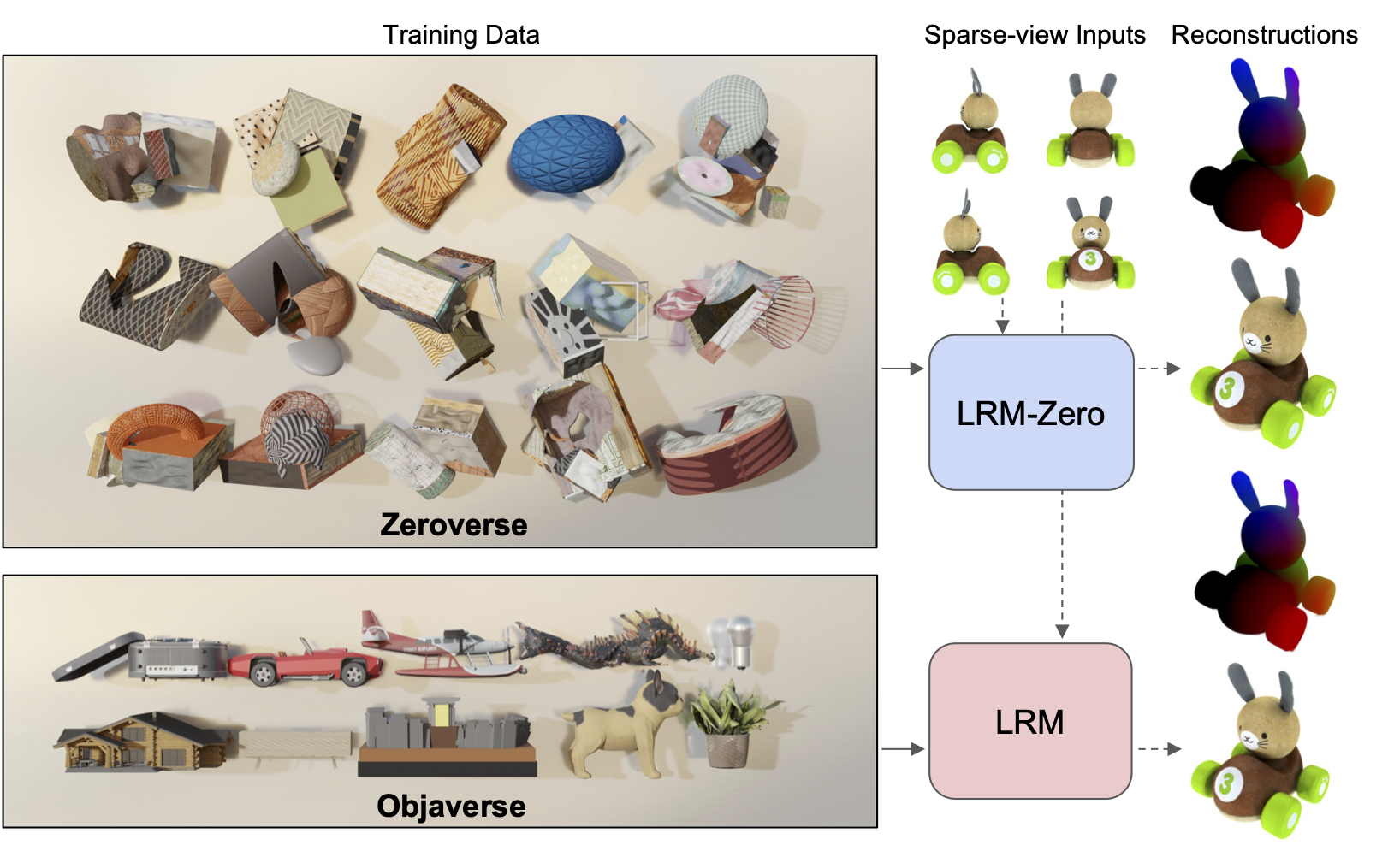LRM-Zero: Training Large Reconstruction Models with Synthesized Data
Desai Xie1,2,
Sai Bi1,
Zhixin Shu1,
Kai Zhang1,
Zexiang Xu1,
Yi Zhou1,
Sören Pirk3,
Arie Kaufman2,
Xin Sun1,
Hao Tan1
1Adobe Research 2Stony Brook University 3Kiel University

1Adobe Research 2Stony Brook University 3Kiel University

Sample data from our Zeroverse and Objaverse dataset. LRM-Zero is trained on Zeroverse.
(This webpage contains a lot of videos and interactive viewers. We suggest using Chrome or Edge for the best experience)